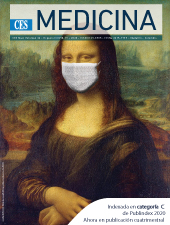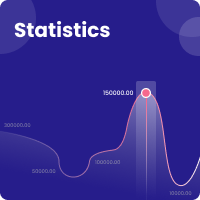Applicability in South America of SARS-CoV-2 infection progression scenarios
DOI:
https://doi.org/10.21615/cesmedicina.34.COVID-19.1Keywords:
South America, Coronavirus, COVID-19, Epidemiological scenarios, Pandemic, controlAbstract
The SARS-CoV-2 epidemic outbreak soon developed into an international public health emergency that rapidly progressed to a pandemic with severe impact on the health and economies of affected countries. The objective of this paper is to describe the epidemiological scenarios of the progression of the infection defined and applicable as initial frameworks of the dynamics of transmission of the disease to South America, saving its population particularities, in the fight to control the pandemic. This is a review of the specialized literature. The analysis of the information results in two sections: epidemiological models in infections and, scenarios of progression of the SARS-CoV-2 pandemic. It is concluded that the epidemiological scenarios of progression of the infection in some regions can be transposed to others as a framework for the control of the pandemic, saving the particularities of each population in terms of individual, cultural, economic and health characteristics.
Downloads
References
WMHC. Wuhan Municipal Health and Health Commission’s Briefing on the Current Pneumonia Epidemic Situation in Our City. [en linea] 2020. [citada 2020 marzo 3]. Hallado en URL: http://wjw.wuhan.gov.cn/front/web/showDetail/2019123108989.
CDC. 2019 Novel coronavirus, Wuhan, China. [en linea] 2020. [citada 2020 abril 3]. Hallado en URL: https://www.cdc.gov/coronavirus/2019-nCoV/summary.html.
Zhu N, Zhang D, Wang W, Li X, Yang B, Song J, et al. A novel coronavirus from patients with pneumonia in China, 2019. N Engl J Med. 2020; 382: 727-733. https://doi.org/10.1056/NEJMoa2001017.
Adhikari SP, Meng S, Wu YJ, Mao YP, Ye RX, Wang QZ, et al. Epidemiology, causes, clinical manifestation and diagnosis, prevention and control of coronavirus disease (COVID-19) during the early outbreak period: a scoping review. Infect Dis Poverty. 2020; 9(1): 29. https://doi.org/10.1186/s40249-020-00646-x.
Huang C, Wang Y, Li X, Ren L, Zhao J, Hu Y, et al. Clinical features of patients infected with 2019 novel coronavirus in Wuhan, China. Lancet. 2020; 395: 497-506. http://dx.doi.org/10.1016/S0140-6736(20)30183-5.
Li Q, Guan X, Wu P, Wang X, Zhou L, Tong Y, et al. Early transmission dynamics in Wuhan, China, of novel coronavirus-infected pneumonia. N Engl J Med. 2020; 382: 1199-1207. https://doi.org/10.1056/NEJMoa2001316.
Palacios M, Santos, E, Velázquez M, León M. COVID-19, una emergencia de salud pública mundial. Rev Clin Esp. 2020.https://doi.org/10.1016/j.rce.2020.03.001.
WHO. Novel Coronavirus–China. [en línea] 2020. [citada 2020 abril 4]. Hallado en URL: https://www.who.int/csr/don/12-january-2020-novel-coronavirus-china/en/.
Mahase E. China coronavirus: WHO declares international emergency as death toll exceeds 200. BMJ. 2020; 368:m408. http://dx.doi.org/10.1136/bmj.m408.
Zhou P, Yang X-L, Wang X-G, Hu B, Zhang L, Zhang W, et al. A pneumonia outbreak associated with a new coronavirus of probable bat origin. Nature. 2020. http://dx.doi.org/10.1038/s41586-020-2012-7.
Herrero M. Moving towards South-South International Health: debts and challenges in the regional health agenda. Cien Saude Colet. 2017; 22(7):2169-2174. https:/doi.org/10.1590/1413-81232017227.03072017.
Chen Y, Liu Q, Guo D. Emerging coronaviruses: Genome structure, replication, and pathogenesis. J Med Virol. 2020; 92: 418-423. http://dx.doi.org/10.1002/jmv.25681.
Moorthy V, Henao A, Preziosi MP, Swaminathan S. Data sharing for novel coronavirus (COVID-19). Bull World Health Organ. 2020; 98:150. http://dx.doi.org/10.2471/BLT.20.251561.
Wang B, Li R, Lu Z, Huang Y. Does comorbidity increase the risk of patients with COVID-19: evidence from meta-analysis. Aging (Albany NY). 2020; 12(7):6049-6057. https://doi.org/10.18632/aging.103000.
Thomas D, Sturdivant R, Dhurandhar N, Debroy S. A primer on COVID-19 Mathematical Models. Obesity (Silver Spring). 2020. https://doi.org/10.1002/oby.22881.
Sánchez F, Miramontes P, Gutiérrez J. Clásicos de la Biología Matemática. Siglo XXI. Primera edición 2002.
Zaman G, Jung I, Torres DFM, Zeb A. Mathematical Modeling and Control of Infectious Diseases. Comput Math Methods Med. 2017;2017:7149154. https://doi.org/10.1155/2017/7149154.
Brinks R, Hoyer A. Illness-death model: statistical perspective and differential equations. Lifetime Data Anal. 2018; 24(4):743-754. https://doi.org/10.1007/s10985-018-9419-6.
Liu Z, Huang S, Lu W, Su Z, Yin X, Liang H, et al. Modeling the trend of coronavirus disease 2019 and restoration of operational capability of metropolitan medical service in China: a machine learning and mathematical model-based analysis. Glob Health Res Policy. 2020; 5(20). https://doi.org/10.1186/s41256-020-00145-4.
Rojas-Vallejos J. Strengths and limitations of mathematical models in pandemicsthe case of COVID-19 in Chile. Fortalezas y limitaciones de los modelos matemáticos en las pandemias: el caso de COVID-19 en Chile. Medwave. 2020; 20(3):e7876. https://doi.org/10.5867/medwave.2020.03.7874.
Yan A, Black A, McCaw J, Rebuli N, Ross J, Swan A, et al. The distribution of the time taken for an epidemic to spread between two communities. Math Biosci. 2018; 303:139-147. https://doi.org/10.1016/j.mbs.2018.07.004.
Johnson H, Gossner C, Colzani E, Kinsman J, Alexakis L, Baute J, et al. Potential scenarios for the progression of a COVID-19 epidemic in the European Union and the European Economic Area, March 2020. Euro Surveill. 2020; 25(9): pii=2000202. https://doi.org/10.2807/1560-7917.ES.2020.25.9.2000202.
Rothan H, Byrareddy S. The epidemiology and pathogenesis of coronavirus disease (COVID-19) outbreak. J Autoimmun. 2020; 109:102433. https:/doi.org/10.1016/j.jaut.2020.102433.
Perlman S. Another decade another coronavirus. N Engl J Med. 2020; 382: 760-762. http://dx.doi.org/10.1056/NEJMe2001126.
Wu J, Leung K, Leung G. Nowcasting and forecasting the potential domestic and international spread of the 2019-nCoV outbreak originating in Wuhan, China: a modelling study. Lancet. 2020; 395(10225): 689-697. https://doi.org/10.1016/S0140-6736(20)30260-9.
Downloads
Published
How to Cite
Issue
Section
License
Copyright (c) 2020 CES Medicina

This work is licensed under a Creative Commons Attribution-NonCommercial-ShareAlike 4.0 International License.
Derechos de reproducción (copyright)
Cada manuscrito se acompañará de una declaración en la que se especifique que los materiales son inéditos, que no han sido publicados anteriormente en formato impreso o electrónico y que no se presentarán a ningún otro medio antes de conocer la decisión de la revista. En todo caso, cualquier publicación anterior, sea en forma impresa o electrónica, deberá darse a conocer a la redacción por escrito.
Plagios, duplicaciones totales o parciales, traduccones del original a otro idioma son de responsabilidad exclusiva de los autores el envío.
Los autores adjuntarán una declaración firmada indicando que, si el manuscrito se acepta para su publicación, los derechos de reproducción son propiedad exclusiva de la Revista CES Medicina.
Se solicita a los autores que proporcionen la información completa acerca de cualquier beca o subvención recibida de una entidad comercial u otro grupo con intereses privados, u otro organismo, para costear parcial o totalmente el trabajo en que se basa el artículo.
Los autores tienen la responsabilidad de obtener los permisos necesarios para reproducir cualquier material protegido por derechos de reproducción. El manuscrito se acompañará de la carta original que otorgue ese permiso y en ella debe especificarse con exactitud el número del cuadro o figura o el texto exacto que se citará y cómo se usará, así como la referencia bibliográfica completa.
| Article metrics | |
|---|---|
| Abstract views | |
| Galley vies | |
| PDF Views | |
| HTML views | |
| Other views | |



